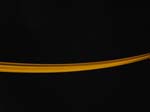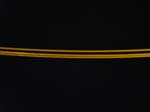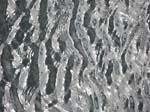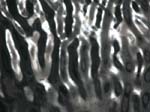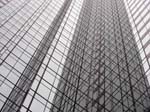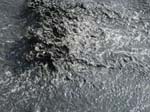|
Katalog / catalogue PHILIPP GEIST Museum Gegenstandsfreier Kunst Otterndorf 2012 (swf) PHOTO WORKS / FOTOARBEITEN Seeing Less Is Seeing MoreOn Philipp Geist's Photographs Holger Lund In order to pursue non-figurative photography, there are essentially two paths available to us nowadays: on the one hand, using a computer platform via purely digital processes; alternatively, based on reality, taking photographs in a specific way, which leads to an abstraction from real objects all the way to their unrecognisability. Philipp Geist's photography follows the second path. Inasmuch as the degree of abstraction can be quite varied sometimes it is possible to see sections of forest (ill. 1), sometimes exclusively series of colourful shapes (ill. 2, 3) it is not a question of abstract art per se here, but rather a photographic attitude, which demands closer definition. The Russian formalist Viktor `klovskij wrote an essay in 1916 entitled Art as Technique. It states there: in order to make the stone more stony, a thing exists that we call art.1 One might object, of course, and point out that the stone is already stony so why go to all the trouble? `klovskij proceeds from the point of view that habit erodes perception, it automates it, so that ultimately only a form of recognition takes place instead of actual experiential seeing. In order to help it on its way, art introduces the particular process of defamiliarisation. Making things seem unfamiliar or strange, indeed, almost unrecognisable in order to see them better, is perhaps how this position could be best summed up. Moreover, it appositely describes a main concern of Philipp Geist's photography. Undoubtedly, the thematic area covered by his works is dedicated to an engagement with structures of time and space, whereby the treatment of movement, light and shade defines this engagement, yet the superordinate aim is still seeing, perceiving. By no means a simple feat, because on the one hand our automated, disengaged perception has to be disrupted, and on the other, defamiliarisation makes perception all the more difficult. And so it should. According to `klovskij, perception is the aim of art and therefore it must be made more difficult in order to prolong it, to intensify and to make it the substance and content of art. Interestingly enough, reality again becomes the content of art thus, because its defamiliarisation leads back to itself, albeit under different auspices. But what distinguishes reality? What are its primary qualities? If you dissolve the outlines, as Philipp Geist does in his photographs, you also dissolve movement, you dissolve focus, if you abandon the manifest reference to the object, then a new view of reality opens up. This becomes real reality in the sense that the very stuff that can affect us from within reality derives its impact here: colours, lines and forms. The things then that we perceive first of all. In this way, reality once more becomes the content of art. Painting is perhaps just as central a topic in Philipp Geist's work as perception: painting through photography, painting with the camera. During the nineteenth century, after its rival medium photography had successfully driven painting from its domain or role of representing reality, painting turned its back on reality in a continual process of abstraction via Impressionism all the way to Cubism and ultimately towards abstract art itself. However, photography itself followed it in this direction, in particular constructivist and concrete photography. This essentially non-representational mode concentrated upon the essence that distinguishes things: lines and forms (later colours as well). László Moholy-Nagy and Otto Piene, for example, are classical exponents here whose abstract works, featuring light and animation in the respective media of photography, film and installation, can be cited as reference points for Philipp Geist's photography (pages 58 & 61). And yet many more influences flow into his work, such as early computer art and raster-notonesque aesthetic minimalism (page 67), but also futurist dynamics (ill. 5 and page 74) and spectral paranormal photography (ill. 4). Philipp Geist likes to draw upon Gerhard Richter when talking about the relationship between painting and photography, not because his method of working might resemble Richter's he doesn't actually produce any photo-based paintings but because the teasing out of specific photographic and painting qualities, which are characteristic of Richter's work, also interests him. Philipp Geist places the focus on the painterly aspects of photography by dissolving the figurative, the indexical character of photography within the photograph itself. Defocusing as a way of producing blurry, out-of-focus images delivers the concomitant focus upon these painterly aspects, or put another way: looking at something out-of-focus in order to see better: this is the formula for this dissolution of (figurative) recognition, which promotes (non-figurative) seeing and thereby the very thing that matters: perception. 1 Cf. Viktor `klovskij, Die Kunst als Verfahren , in Jurij Striedter (ed.), Russischer Formalismus. Texte zur allgemeinen Literaturtheorie und zur Theorie der Prosa (Munich, 1994), pp. 3 35. ---- Weniger sehen, um mehr zu sehen Zu den Fotografien von Philipp Geist Holger Lund Um gegenstandsfreie Fotografie zu betreiben, bieten sich einem heute prinzipiell zwei Wege an. Zum einen kann sie rechnerbasiert erzeugt werden, durch rein digitale Prozesse. Und zum anderen kann sie realitätsbasiert erzeugt werden, indem auf eine bestimmte Art und Weise fotografiert wird, die zu einer Abstrahierung von realen Gegenständen führt bis hin zu deren Unkenntlichkeit. Philipp Geists Fotoarbeiten haben mit dem zweiten Weg zu tun. Insofern der Grad der Abstrahierung jedoch sehr unterschiedlich ausfällt mal sind etwa noch Waldelemente zu sehen (Abb. 1), mal ausschließlich farbige Formen (Abb. 2, 3) , handelt es sich nicht um abstrakte Kunst per se, sondern um eine fotografische Haltung, die näherer Bestimmung bedarf. Der russische Formalist Viktor `klovskij schrieb 1916 einen Aufsatz mit dem Titel Kunst als Verfahren. Darin heißt es: Um den Stein steinern zu machen, existiert das, was man Kunst nennt.1 Nun mag man einwenden, der Stein sei doch bereits steinern wozu also die Mühe? `klovskij geht davon aus, dass Gewohnheit die Wahrnehmung abschleift, automatisiert, sodass letztlich nur ein Wiedererkennen anstelle eines tatsächlichen, erlebnisvollen Sehens stattfindet. Um diesem auf den Sprung zu helfen, setzt die Kunst insbesondere das Verfahren der Verfremdung ein. Die Dinge fremd machen, ja fast unkenntlich machen, um sie besser sehen zu können so könnte diese Position zusammengefasst werden. Und sie beschreibt treffend ein Hauptanliegen von Philipp Geists Fotoarbeiten. Sicherlich, das thematische Feld seiner Arbeiten ist der Auseinandersetzung mit Zeit- und Raumstrukturen gewidmet, wobei die Behandlung von Bewegung, Licht und Schatten diese Auseinandersetzung definiert, doch das übergeordnete Ziel ist: Sehen, Wahrnehmen. Was gar nicht so leicht ist, weil zum einen unsere automatisierte, desinteressierte Wahrnehmung aufgebrochen werden muss und zum anderen die Verfremdung die Wahrnehmung erschwert. Und das soll sie auch. `klovskij zufolge ist die Wahrnehmung Ziel der Kunst, und somit muss sie erschwert werden, um sie zu verlängern, zu intensivieren und so zum Inhalt der Kunst werden zu lassen. Interessanterweise wird dadurch auch die Realität wieder zum Inhalt der Kunst, denn ihre Verfremdung führt wieder auf sie selbst zurück. Nur unter anderen Vorzeichen. Was ist es denn, was Realität ausmacht? Was sind ihre primären Qualitäten? Löst man, wie Philipp Geist in seinen Fotografien, Konturen auf, löst man Bewegung auf, löst man Schärfe auf, verlässt man den evidenten Objektbezug, so eröffnet sich eine andere Sicht auf die Realität. Diese wird wirkliche Wirklichkeit , in dem Sinne, dass das, was aus der Realität heraus auf uns wirkt, zur Wirkung gelangt: Farben, Linien und Formen. Das also, was wir primär wahrnehmen. Auf diese Weise wird Realität wieder zum Inhalt der Kunst. Vielleicht genauso zentral wie das Thema des Wahrnehmens ist bei Philipp Geist dasjenige der Malerei: Malerei durch Fotografie, Malerei mit der Kamera. Als im 19. Jahrhundert die Fotografie als Konkurrenzmedium die Malerei aus ihrer Domäne der Realitätsrepräsentation vertrieb, wandte sich die Malerei in einem kontinuierlichen Abstraktionsprozess über den Impressionismus bis zum Kubismus von der Realität ab und schließlich der Abstrakten Kunst zu. Doch selbst dorthin wurde sie von der Fotografie verfolgt, speziell von der konstruktivistischen und der Konkreten Fotografie. Diese, ihrem Wesen nach nicht abbildungsinteressiert, konzentrierten sich auf das, was die Dinge ausmacht: Linien und Formen (später auch Farben). László Moholy-Nagy und Otto Piene etwa seien hier als Musterbeispiele genannt, deren abstrakte Licht- und Bewegungsarbeiten in Foto, Film und Installation als Bezugspunkte für Philipp Geists Fotografien herangezogen werden können (Seiten 58, 61). Doch fließt in diese noch weit mehr ein: frühe Computerkunst und Raster-Noton-artige Minimalästhetik (Seite 67), aber auch futuristische Dynamik (Abb. 5 und Seite 74) und emanationshafte Geisterfotografie (Abb. 4). Für das Verhältnis von Malerei und Fotografie zieht Philipp Geist gerne Gerhard Richter heran. Nicht, weil seine Arbeitweise der Richters ähnlich wäre, schließlich stellt er keine fotobasierten Gemälde her, sondern weil das Herausarbeiten spezifisch fotografischer und malerischer Qualitäten, das für Richter kennzeichnend ist, ihn ebenso interessiert. Durch das Auflösen des Abbildhaften, des indexikalischen Charakters der Fotografie in der Fotografie selbst, legt Philipp Geist den Fokus auf malerische Aspekte der Fotografie. Die Defokussierung als Unschärfeerzeugung liefert die Fokussierung auf diese malerischen Aspekte. Oder, nochmals gewendet: Unscharf sehen, um besser zu sehen so lautet die Formel für die Auflösung des (gegenständlichen) Wiedererkennens, die das (ungegenständliche) Sehen befördert und damit das, worauf es ankommt: die Wahrnehmung. 1 Vgl. Viktor `klovskij, Die Kunst als Verfahren; in: Jurij Striedter (Hrsg.), Russischer Formalismus. Texte zur allgemeinen Literaturtheorie und zur Theorie der Prosa, München 1994, S. 3 35. PHOTOWORKS by Philipp Geist www.p-geist.de | www.videogeist.de |




